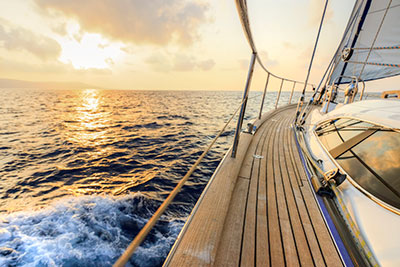Introduction
Think about if you were out on a boat observing the ocean waves as they passed by you. Remember, ocean waves are a type of mechanical wave wave that needs a medium because they need a medium matter through which waves pass .

What might you notice about the waves? You may notice how far apart the waves are or how high they are or how many you see as your boat sails along? All of these things make up the different properties of a wave. In this lesson, you will learn bout the different parts of both transvers and longitudinal waves and then in the Try It, you will model a simple wave to investigate how these parts affect each other.
| Lesson Objectives |
|
Following successful completion of this lesson, students will be able to...
Enduring Understandings
The above objectives correspond with the Alabama Course of Study: Physical Science standards: 13, 15 |
